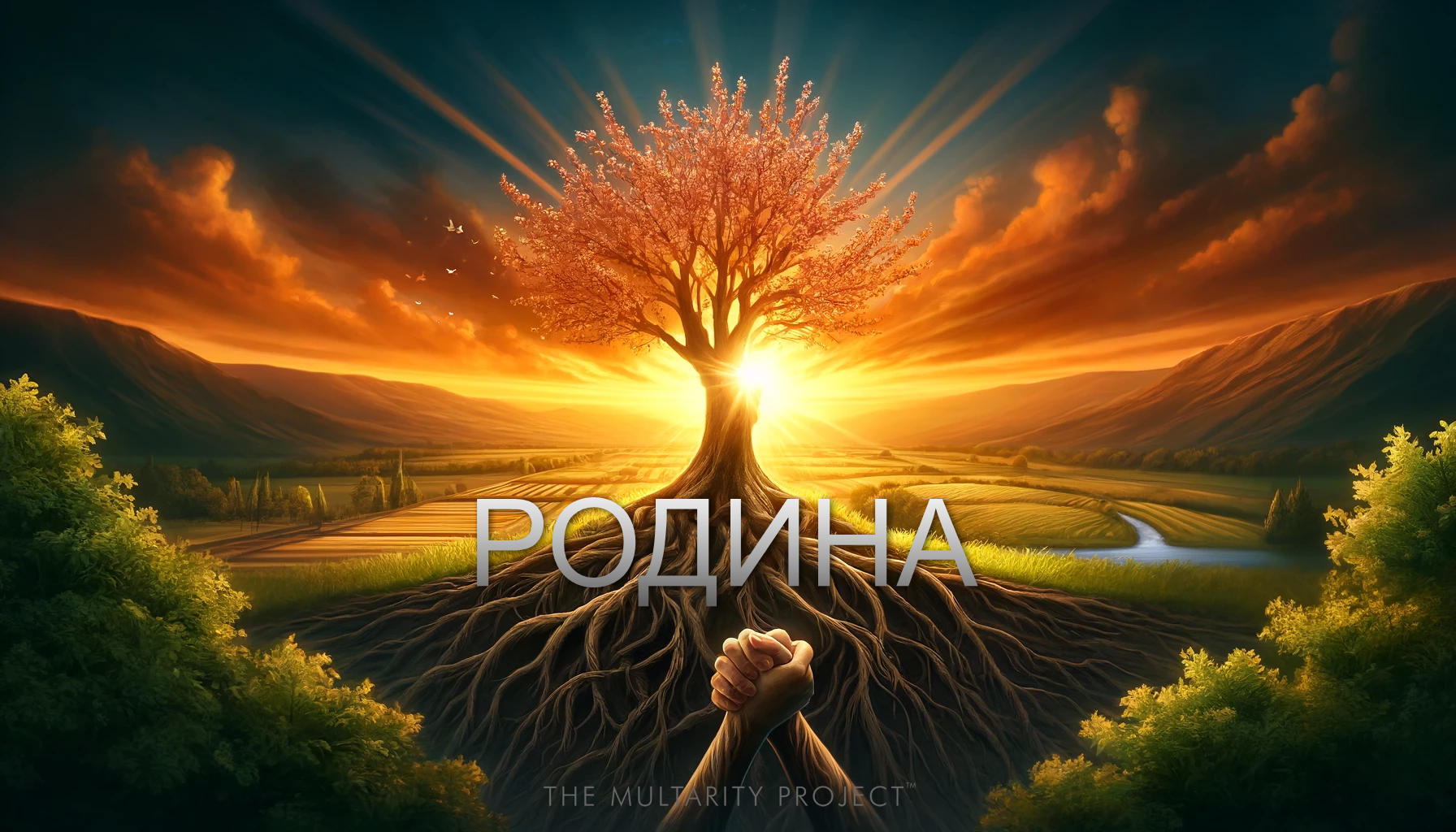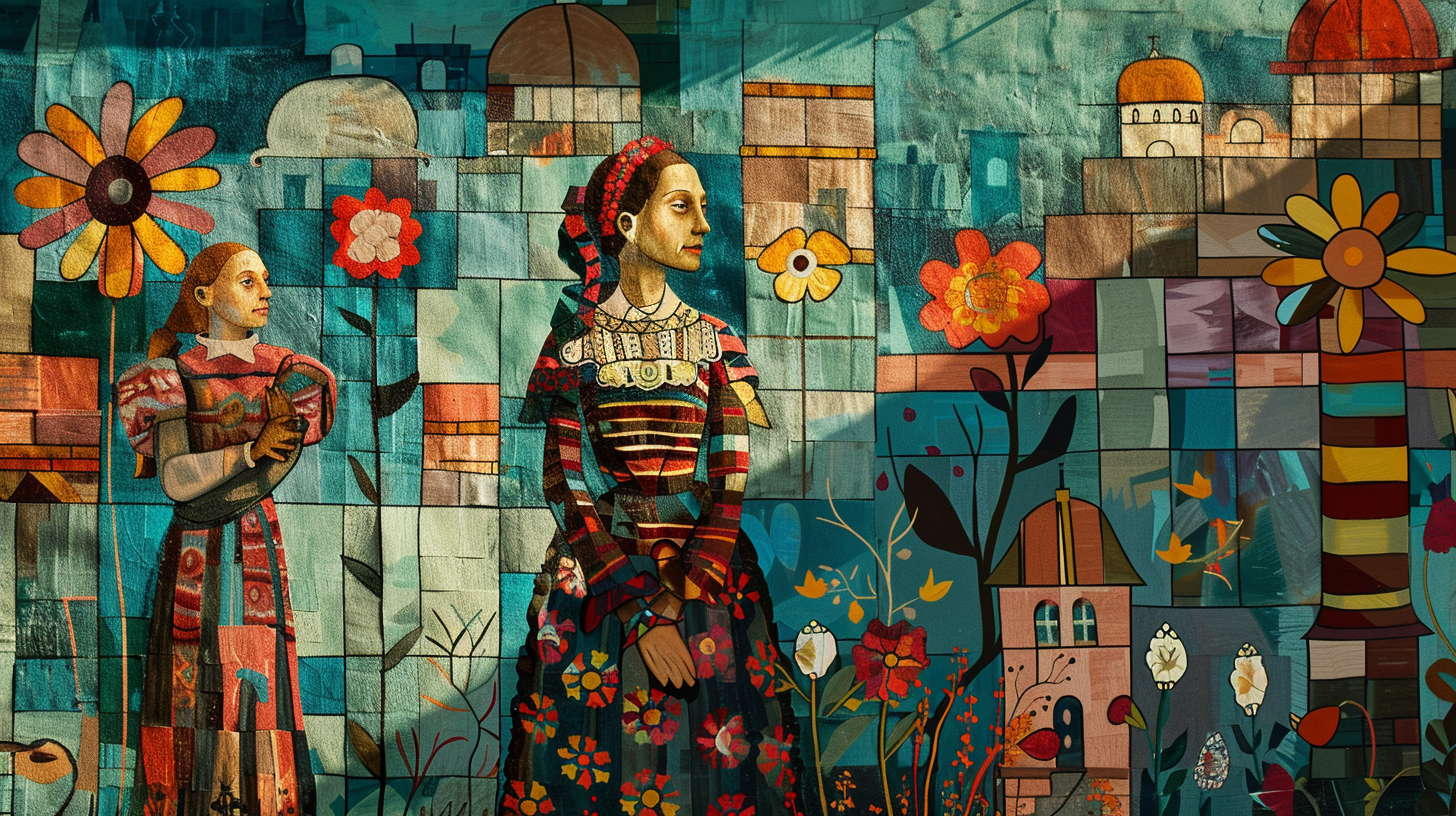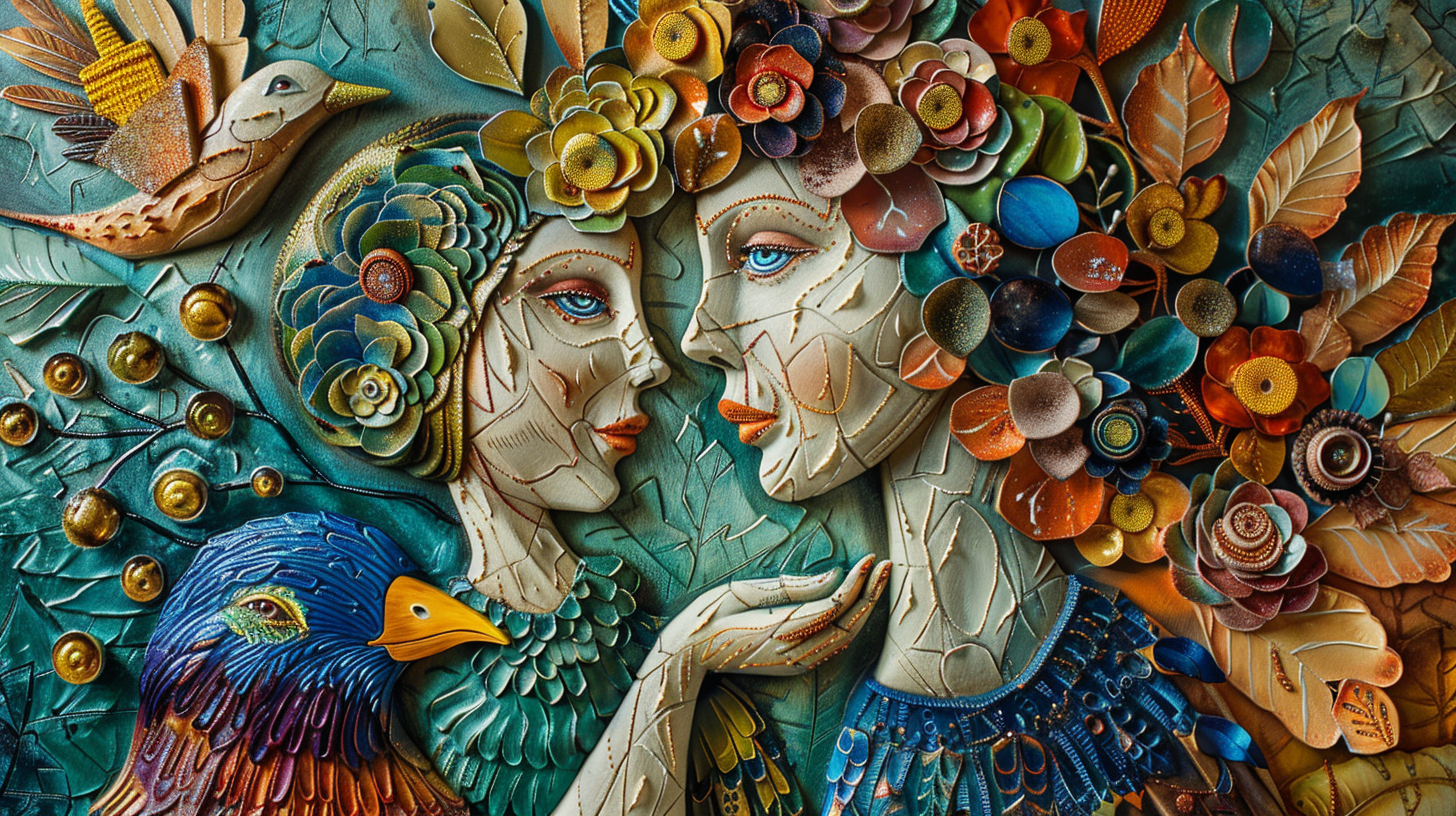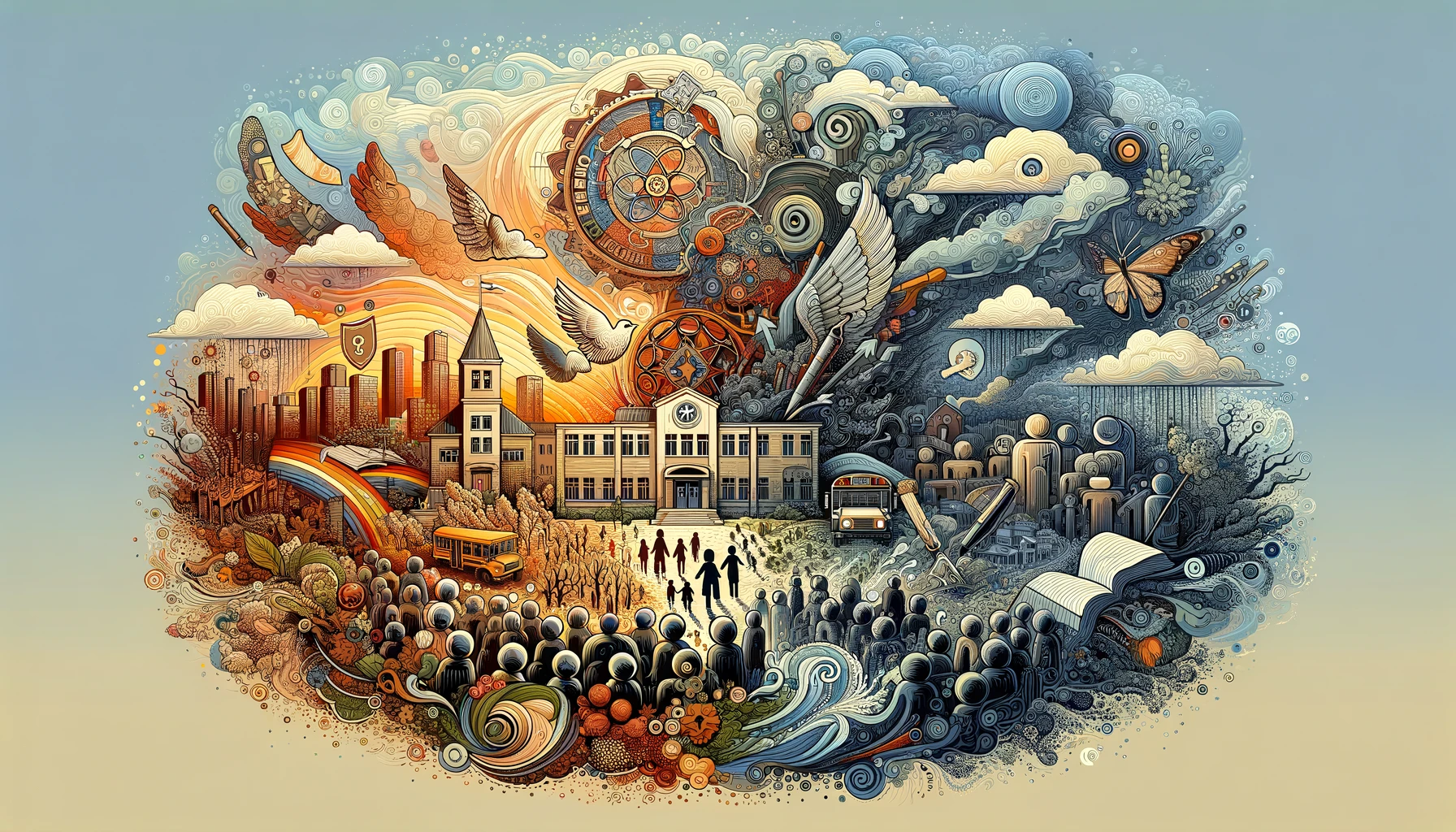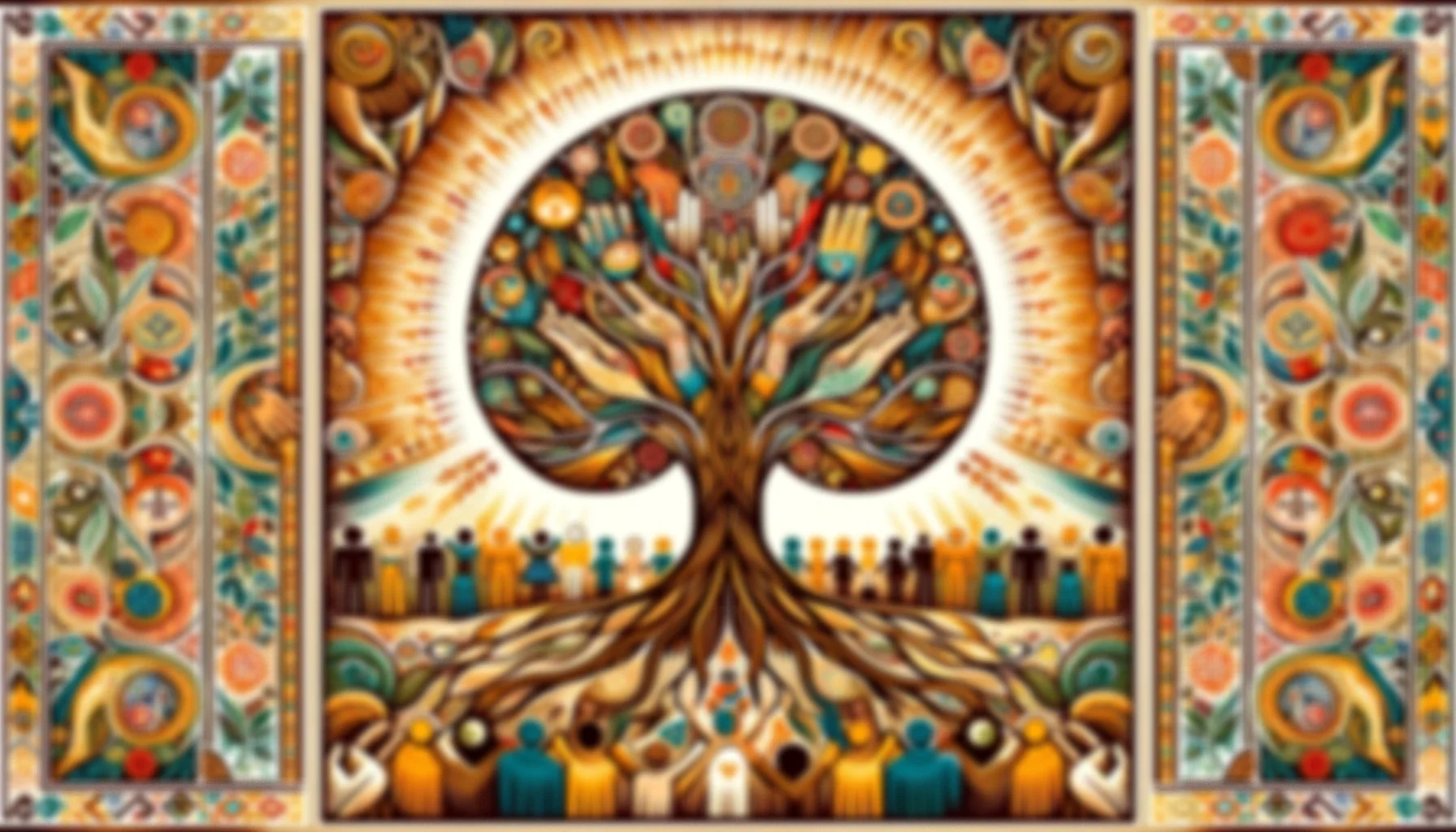
RODYNA
JUNE 6, 2024
Thank you for your vulnerability and openness during these intensely challenging times. We recognize the immense stress and tension you are under as educators in Ukraine during wartime conditions. Your willingness to participate in the Multarity Project to explore the concepts that can both unify and divide us is as much courageous as it is essential.
In our discussion on the topic of RODYNA, we touched on the deep meanings of family, belonging, and support. Many of you shared how RODYNA signifies a sense of unity, safety, and connection, even amid hardship. The conversation highlighted the diverse ways in which RODYNA is reflected in our lives, from cultural and religious contexts to personal experiences of connection and disconnection. Despite the struggles and conflicts within families, the enduring support and understanding were emphasized as core elements of RODYNA.
We also explored the complex nature of RODYNA in various aspects of culture, acknowledging both the strengths and challenges it brings. This conversation, held under unique and stressful wartime circumstances, was a testament to the resilience and hope that binds you all together.
Please take some time to explore the symbology and the detailed conversation points further. Your insights and reflections are invaluable.
SIX THEMES
Unity and Belonging
The discussion highlighted how RODYNA represents a profound sense of unity and belonging. Despite the ongoing conflict and separation, many expressed feeling a strong connection to both their immediate families and their school community. This unity is seen as a source of strength and resilience.
Complexity of Family Dynamics
The conversation acknowledged the complexity and challenges inherent in “family dynamics” for a community. While RODYNA often evokes feelings of safety and support, it also involves conflicts and difficulties. Participants noted that these struggles are part of what makes a family strong and resilient.
Support and Accountability
A recurring theme was the importance of mutual support and accountability within RODYNA. Participants shared experiences of relying on family and community for help and understanding, especially during challenging times. This sense of looking out for one another and being responsible for each other’s well-being was emphasized.
Impact of War on Connection
The ongoing war has significantly impacted feelings of connection and disconnection within RODYNA. Many spoke of the physical and emotional distance from family members due to the conflict, highlighting the struggle to maintain bonds and support systems under such stress.
Cultural and Religious Reflections
RODYNA was explored through the lens of culture and religion, revealing its multifaceted nature. The idea of family in different cultural and religious contexts showed how shared values and identity are integral to RODYNA. The ability of diverse beliefs to coexist peacefully within a “family” framework was particularly noted.
Hope and Resilience
Amidst the challenges, a strong sense of hope and resilience emerged. The belief in the enduring power of RODYNA to provide support, foster understanding, and sustain individuals through hardship was a key takeaway. This resilience is seen as essential for navigating the current crisis and rebuilding in the future.
NOTEWORTHY OBSERVATIONS
Emotional Resilience in Adversity
Despite the overwhelming stress and danger of their environment, participants demonstrated remarkable emotional resilience. This resilience was not just a static trait but an active, dynamic process. The group continuously adapted to their circumstances, drawing strength from each other and finding moments of positivity even in bleak situations. This discovery highlights the profound capacity of human beings to endure and thrive through collective support and shared purpose.
Power of Shared Goals
The discussion revealed that shared goals and collective efforts significantly bolster community strength and morale. The educators found that working towards common objectives provided a sense of purpose and direction, mitigating the chaos around them. This insight underscores the importance of fostering shared aspirations and collaborative projects to maintain community cohesion and motivation in challenging times.
Interplay of Hope and Despair
The coexistence of hope and despair was a recurring theme. Participants oscillated between moments of optimism and periods of deep despondency. This interplay suggests that these emotions are not mutually exclusive but can coexist, influencing each other in complex ways. Understanding this dynamic can help in developing strategies to foster hope while acknowledging and addressing the realities of despair.
Complexity of Loneliness
A surprising aspect of the conversation was the nuanced understanding of loneliness. Even within a closely-knit community, feelings of isolation were prevalent. Participants expressed that despite being surrounded by others, the emotional and psychological toll of the war could lead to profound feelings of loneliness. This complexity suggests that physical proximity is not enough to mitigate feelings of isolation; emotional connection and understanding are crucial.
Dual Nature of Tradition
Tradition emerged as both a stabilizing force and a potential barrier to necessary change. While cultural and historical roots provided comfort and a sense of identity, they could also hinder adaptability in the face of new challenges. This duality highlights the need for a balanced approach that honors tradition while embracing innovation and flexibility.
The Vital Component of Forgiveness and Grace
The important inclusion of forgiveness and grace emerged as central to RODYNA. Unwavering acceptance fosters understanding, trust, and unity. Such an environment encourages open dialogue, healing, and progress towards shared goals. Actively creating a culture of grace builds a more inclusive community where every member feels valued, forming a robust network of support and driving progress through compassion and understanding.
The Multarities of RODYNA
Understanding the multarities of our conversation on RODYNA helps us grasp the complexity of our shared experiences. By identifying and internalizing these contrasting yet interconnected themes, we gain deeper empathy, insight, and the potential for innovative solutions. As you explore the multarities we've identified, consider how these dualities shape your perspectives and interactions. Reflect on the empathy they evoke and the new possibilities they reveal, guiding us towards a more cohesive and resilient community.
Stability vs. Uncertainty
Stability: The need for a sense of normalcy and routine, which provides psychological comfort and a semblance of control in a chaotic environment. Educators and community members may find solace in their daily routines and the predictable aspects of their work and interactions.
Uncertainty: The constant presence of unpredictability and danger due to the war. This includes concerns about safety, the future, and the well-being of loved ones. This uncertainty can create a backdrop of anxiety and stress, impacting overall mental health and decision-making.
Consideration: How can we create pockets of stability within our routines to counterbalance the uncertainty? Reflect on what small, consistent actions or rituals can be introduced to bring a sense of normalcy and control.
Tradition vs. Change
Tradition: The value of cultural and historical roots, which provide a sense of identity and continuity. Traditions can offer comfort and a connection to the past, grounding individuals in familiar practices and beliefs.
Change: The necessity to adapt and innovate in response to new challenges. The war and its impact on daily life require flexibility and the willingness to embrace new ways of thinking and operating. Change can be both a source of stress and an opportunity for growth.
Consideration: How can traditions be adapted to fit new circumstances without losing their essence? Consider how you can honor and preserve meaningful traditions while being open to necessary changes and innovations.
Connection vs. Isolation
Connection: The strength derived from relationships and social support. Building and maintaining strong connections with family, colleagues, and the community is vital for emotional and psychological well-being.
Isolation: The reality of physical and emotional separation due to the war. This can include separation from loved ones, feelings of loneliness, and the difficulty of maintaining social bonds under challenging circumstances.
Consideration: How can you foster connections despite the physical and emotional barriers? Consider creative ways to maintain and strengthen relationships, ensuring that everyone feels supported and less isolated.
Hope vs. Despair
Hope: The belief in a better future and the resilience to keep moving forward despite challenges. This is reflected in the desire to rebuild, support one another, and maintain a positive outlook. Acts of kindness, community support, and shared goals contribute to this sense of hope.
Despair: The feelings of helplessness and sadness that can arise from prolonged exposure to conflict and hardship. The emotional toll of war, loss, and separation can lead to moments of deep despair, impacting motivation and mental health.
Consideration: In moments of despair, what sources of hope can you identify or create for yourself and others? Think about how you can foster and share hopeful narratives within your community to uplift and inspire resilience.
Individual Needs vs. Collective Good
Individual Needs: Personal aspirations, mental health, and self-care are crucial, especially in stressful environments. Each person has unique needs and coping mechanisms that must be acknowledged and supported.
Collective Good: The importance of prioritizing the community's well-being and working together towards common goals. Sacrifices may be necessary to support the larger group, and fostering a sense of unity and mutual aid is essential for collective resilience.
Consideration: How can you balance your personal needs with the needs of the community? Reflect on ways to ensure that both individual well-being and collective resilience are nurtured and maintained.
Control vs. Acceptance
Control: The desire to manage and influence one's environment and outcomes. In uncertain and stressful situations, the need for control can be a coping mechanism to feel empowered and secure.
Acceptance: The recognition of situations beyond one's control and the need to adapt. Acceptance involves acknowledging realities without resistance, which can lead to inner peace and resilience.
Consideration: How can you balance the need for control with the practice of acceptance? Reflect on what aspects of your life you can actively influence and what you might need to accept to reduce stress and increase well-being.
Analysis and Invitation for Reflection
These and other multarities coexist and interact in complex ways, creating a rich intersection of experiences and emotions. Each multarity offers contrasting perspectives that can both challenge and enhance understanding. By acknowledging and exploring these multarities, there is the possibility for a deeper appreciation of shared experiences and the diverse ways in which the whole community can navigate current and emerging reality.
We invite you to reflect on how these multarities influence your individual and collective perception of Rodyna and its honored place within the community, with questions such as: How do stability and uncertainty shape our daily lives? In what ways do hope and despair coexist and impact our outlook? How do individual needs balance with the collective good? Consider the role of tradition and change in your routines and beliefs. Reflect on moments of connection and isolation and their effects on your emotional well-being.
Engaging with these multarities can reveal underlying similarities and shared values, fostering a stronger, more resilient community. As you contemplate these themes, think about additional multarities that may exist in your life and the broader community. What meaning do these multarities hold for you, and how do they shape your experiences and interactions with others? What can you do with these insights to create a more balanced and supportive environment for yourself and those around you?
SYMBOLS & ART
Explore the gallery below and search for your words, ideas, and emotions within these images. Each piece was inspired by the heartfelt conversations and reflections shared during our discussion on RODYNA. If something isn't immediately clear, we encourage you to dig deeper and reflect on other thoughts and sentiments that might have been expressed. Remember, our community includes everyone—adults and children alike—and each voice and perspective contributes to the rich tapestry of our shared experience. Consider how these images encapsulate the collective journey and the unique contributions of every member.
Roots of Unity
This piece captures the essence of RODYNA—family and interconnectedness—through a central tree formed by interconnected hands, symbolizing unity. The vibrant patterns and colors reflect diverse cultural backgrounds, highlighting how diversity enhances collective strength. The surrounding figures represent mutual support within the community. This artwork prompts reflection on how individual backgrounds contribute to community strength, the ways we support each other, and the celebration of diversity within unity.
Reflections
This artwork portrays the concept of RODYNA through a series of windows, each revealing different aspects of family life and relationships. The central figure looks out, reflecting on diverse family experiences and memories, highlighting how personal and collective histories shape our understanding of connection. The vibrant scenes within each window panel symbolize various emotions and shared moments, inviting viewers to ponder the rich tapestry of family bonds. This piece encourages introspection on the multifaceted nature of RODYNA, urging one to consider how past experiences, cultural backgrounds, and individual perspectives weave together to form a unified whole.
A Symphony of Voices
This image embodies the collective strength and beauty of unity through the metaphor of a choir. As noted, the more voices that join, the richer and more harmonious the music becomes. Each individual, though distinct, contributes to the overarching melody, illustrating the concept of RODYNA as a powerful, interconnected community. It invites viewers to reflect on how their unique voices contribute to a larger, more harmonious whole, and how unity can create something profoundly beautiful even in times of adversity.
Conversations With Our Younger Selves
This image captures the cyclical nature of family life and the passage of time. The spiral composition, anchored by a clock, symbolizes how generations are interconnected through shared memories, wisdom, and experiences. The scenes within the spiral depict moments of joy, teaching, and bonding, reflecting the timeless essence of RODYNA. It invites viewers to reflect on the dialogues between past, present, and future selves, creating a continuous thread of love and legacy.
The Complexities of Community & Family
This image captures the layered complexity of human relationships within the context of RODYNA, reflecting the balance between unity and individuality, tradition and change. The split scene suggests different emotional climates: the warm, nurturing spaces above ground and the intricate, sometimes tangled roots below, representing the underlying connections and histories. It emphasizes how family and community are built from shared experiences and support, even amidst challenges and adversity. The artwork invites viewers to explore how these multifaceted interactions shape their own perceptions of belonging and resilience.
Symbols of Hope
This vibrant scene depicts a traditional Ukrainian festival, symbolizing the hope and resilience of the community amidst challenging times as a symbol of better days ahead. The bright colors and joyous expressions capture a vision of peace and unity, suggesting that despite the current turmoil, there is a collective belief in a brighter future. The presence of the church in the background anchors the scene in spiritual and cultural roots, highlighting faith and tradition as sources of strength and continuity. This image invites viewers to reflect on the enduring power of cultural rituals and the hope that peace will eventually return.

MORE SYMBOLS, MORE MEANING
Explore the images below and search for your words, ideas, and emotions within these images. Each piece was inspired by the heartfelt conversations and reflections shared during our discussion on RODYNA. If something isn't immediately clear, we encourage you to dig deeper and reflect on other thoughts and sentiments that might have been expressed. Remember, our community includes everyone—adults and children alike—and each voice and perspective contributes to the rich tapestry of our shared experience. Consider how these images encapsulate the collective journey and the unique contributions of every member.
